Betta prima
Classification
Order: Perciformes Family: Osphronemidae
Distribution
This species has been collected at numerous localities in south-eastern Thailand and from parts of the Mekong basin in Cambodia, Laos, plus the delta region and offshore island of Phú Quốc in southern Vietnam.
The type locality is close to the town of Chantaburi on the Gulf of Thailand coast and it ‘s also been recorded close to the highway approaching Trat, at Klong Nakon Noi near the town of Nakon Sritamarat and at the waterfall of Tha Krabak in Sa Kaeo province.
In Cambodia localities include Kirikum, the coastal town of Sihanoukville (also known as Kampong Som) and much further inland in the northern province of Stung Treng, where a 37km long stretch of the Mekong was designated a Ramsar site in 1999.
Habitat
Inhabits forest swamps and streams containing clear water, which may be still, slow-moving or flowing swiftly depending on locality and in some cases time of year.
In flowing streams the substrate can be composed of exposed bedrock, jumbles of boulders, smaller stones with patches of leaf litter in quieter areas and submerged roots around the margins. In this kind of habitat B. prima tends to be found sheltering among marginal tree roots, or among leaf litter and aquatic vegetation in slower-moving sections or associated pools.
The swamp habitats are generally shaded from the sun, the dense canopy of branches above meaning very little light penetrates the water surface. Marginal vegetation also tends to grow thickly.
The water is typically stained dark brown with humic acids and other chemicals released by decaying organic material. The dissolved mineral content is normally negligible, pH between 3.0 and 5.5 and substrate composed mainly of fallen leaves, branches and submerged tree roots.
Maximum Standard Length
40 – 50 mm. According to Kottelat (1994) it’s sexually mature at just 21 mm.
Aquarium SizeTop ↑
An aquarium with base measurements of 60 ∗ 30 cm or equivalent is large enough for a pair or small group.
Maintenance
Can be maintained in a fully-decorated aquarium although many breeders prefer not to use a substrate for ease of maintenance. Driftwood roots and branches can be used and placed such a way that a few shady spots are formed.
If you can’t find driftwood of the desired shape common beech or oak is safe to use if thoroughly dried and stripped of bark. Clay plant pots or lengths of piping can also be included to provide further shelter.
The addition of dried leaf litter, with beech, oak or Ketapang almond leaves all suitable, can further emphasise the natural feel and as well as offering additional cover for the fish brings with it the growth of microbe colonies as decomposition occurs. These can provide a valuable secondary food source for fry and the tannins and other chemicals released by the decaying leaves are also considered beneficial.
Like others in the genus this species seems to do best under fairly dim lighting. You could add Asian plant species that can survive under such conditions such as Microsorum pteropus, Taxiphyllum barbieri or perhaps some potted Cryptocoryne spp., and a few patches of floating vegetation would be useful to diffuse the light entering the tank.
Filtration need not be too strong, with an air-powered sponge filter set to turn over gently adequate. Keep the tank well-covered and do not fill it to the top as like all Betta spp. it requires occasional access to the layer of humid air that will form above the water surface, and is an excellent jumper.
Water Conditions
Temperature: 23 – 27 °C
pH: Values over the range 4.0 – 7.0 have been recorded in its natural waters.
Hardness: 0 – 179 ppm
Diet
Likely to prey on insects and other small invertebrates/zooplankton in nature. Captive fish will normally accept dried products once they’re recognised as edible, but should be offered plenty of small live or frozen foods such as Daphnia, Artemia or bloodworm regularly to ensure development of optimal colour and condition.
Small insects such as crickets or Drosophila fruit flies are also suitable to use; it’s best to fill the stomachs of these by feeding them fish flakes or some kind of vegetable matter before offering them to the fish. Take care not to overfeed as Betta spp. seem particularly prone to obesity.
Behaviour and CompatibilityTop ↑
Not recommended for the standard community set-up for reasons already touched upon. It’s requirements and disposition mean it’s best kept alone or with very peaceful species since much bigger or more vigorous fishes are likely to intimidate and outcompete it. Some small cyprinids and loaches that inhabit similar environments in nature are compatible.
It can be maintained in a pair or group and will display some interesting behavioural interactions under the latter circumstances.
Sexual Dimorphism
Males grow larger, possess a greater amount of iridescent scaling on the head, a broader head shape, and more extended fins than females.
Reproduction
Paternal mouthbrooder. Ideally organise a separate tank for breeding purposes, unless the fish are already being maintained alone, setting this up as suggested above.
The tank should have the tightest-fitting cover you can find (some breeders use clingfilm instead to ensure no gaps) as the fry need access to a layer of warm, humid air without which development of the labyrinth organ can be impaired.
Following a protracted courtship, eggs and milt are released during an ’embrace’ typical of osphronemids in which the male wraps his body around that of the female. Several ‘dummy’ embraces may be required before spawning commences.
Fertilised eggs are caught on the anal fin of the male then picked up in the mouth of the female before being spat out into the water for the male to catch. Once the male has all the eggs in his mouth the cycle is repeated untill the female is spent of eggs, a process which can take some time.
A brooding male may swallow or release the eggs prematurely if stressed or inexperienced, so it’s preferable to leave the female and any other fishes in situ. The incubation period is 7-12 days at the end of which the male will begin to release fully-formed, free-swimming fry. At this point they can be removed or left to grow alongside the parents, though some may be lost to predation under the latter circumstances.
The fry are large enough to accept motile foods such as microworm and Artemia nauplii immediately, though it should be noted that there exist reports of young Betta developing health issues if fed excessive amounts of the latter. Offer small amounts of different foods 2 -3 times per day for optimal growth rate, and don’t change too much water at once, with regular, small changes preferable to intermittent larger ones.
NotesTop ↑
Prior to description this species was widely misidentified as Betta pugnax or B. taeniata. It’s included in the B. pugnax complex of closely-related species within the genus, an assemblage of which members share the following set of characters: relatively large head measuring 28-40% SL; live colouration usually brown with green or blue iridescent spots; male with similarly-coloured scales on opercle, sometimes extending to abdomen; juveniles and females usually brown with two central body stripes and a dark marking on the caudal peduncle; anal-fin in mature specimens pointed and often elongated; caudal-fin lanceolate.
It can be told apart from other members of the B. pugnax group by the following characters: second postorbital stripe on opercle complete; no transverse bars in caudal-fin; 20-22 predorsal scales; preanal length 50.6-54.8 % SL. Not all authors consider it a member of this group, however, with some placing it in the B. picta complex, e.g., Schindler and Schmidt (2006).
The genus Betta is the most speciose within the family Osphronemidae with almost 70 recognised members and looks set to grow further with new ones continuing to be described on a regular basis since the turn of the century.
Member species have successfully adapted to inhabit a variety of ecological niches from stagnant ditches to flowing hill streams including some extreme environments such as highly acidic peat swamp forests.
The referral of members to a number of groups containing closely-related species is now generally accepted but largely based on morphological/behavioural characters. Molecular phylogenetic work is thus required and would undoubtedly prove useful in more precisely determining relationships between these fishes.
A full list of the species groups as currently recognised can be found here.
Like others in the suborder Anabantoidei this species possesses an accessory breathing organ known as the labyrinth. So-called due to its maze-like structure this organ allows the fish to breathe atmospheric air to a certain extent.
Comprising paired suprabranchial organs formed via expansion of the epibranchial (upper) section of the first gill arch and housed in a chamber above the gills, it contains many highly-vascularised, folded flaps of skin which function as a large respiratory surface. Its structure varies in complexity between species, tending to be better-developed in those inhabiting harsher environments.
References
- Kottelat, M., 1994 - Ichthyological Exploration of Freshwaters 5(4): 297-304
Diagnoses of two new species of fighting fishes from Thailand and Cambodia (Teleostei: Belontiidae). - Schindler, I. and J. Schmidt, 2006 - Zeitschrift für Fischkunde 8(1/2): 47-69
Review of the mouthbrooding Betta (Teleostei, Osphronemidae) from Thailand, with descriptions of two new species. - Tan, H. H. and P. K. L. Ng, 2005 - Raffles Bulletin of Zoology Supplement (13): 43-99
The fighting fishes (Teleostei: Osphronemidae: Genus Betta) of Singapore, Malaysia and Brunei. - Witte, K.-E., and J. Schmidt, 1992 - Ichthyological Exploration of Freshwaters 2(4): 305-330
Betta brownorum, a new species of anabantoids (Teleostei: Belontiidae) from northwestern Borneo, with a key to the genus.

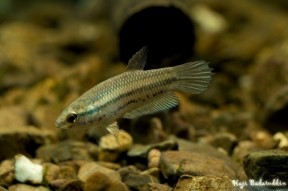
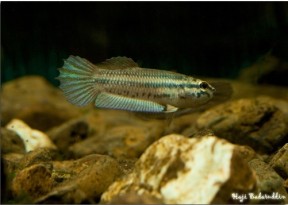
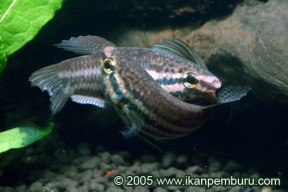
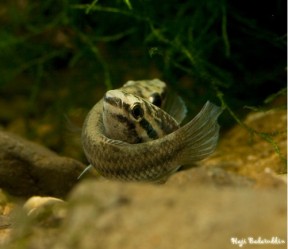

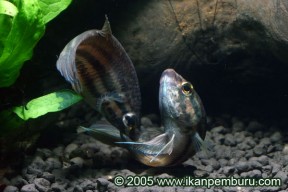
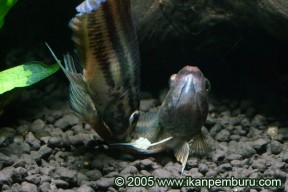

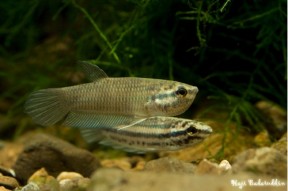
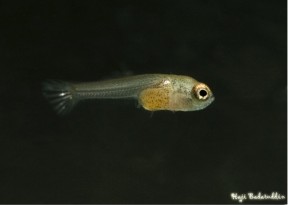

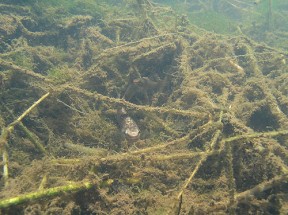
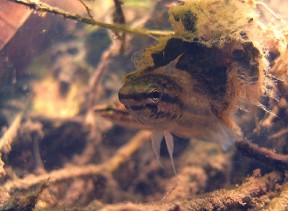

August 13th, 2012 at 8:21 am
We can find B.prima in Vietnam.I have a population from Phu Quoc island in south VN
August 13th, 2012 at 8:23 am
Thanks for the info Herve, will add it now. 🙂 Do you know if there also exist populations on mainland Vietnam?
August 13th, 2012 at 10:32 am
Salut Matt
Yes we can find B.prima or aff.prima in Phu Quoc inland and I think higher in the delta.
September 8th, 2012 at 11:31 am
I caught this species at Pangsida National Park in Sa Kaeo Province in Thailand 1999. I brought some home and bred them in my aquariums.The male got very darkened gillcovers and throut during brooding.I have some pictures here:
https://www.seriouslyfish.com/?attachment_id=277580
https://www.seriouslyfish.com/?attachment_id=277581
https://www.seriouslyfish.com/?attachment_id=277582
https://www.seriouslyfish.com/?attachment_id=277583
September 10th, 2012 at 9:54 am
Hi thaifighter, thanks for sharing your photos! May we add one or two to the main profile?